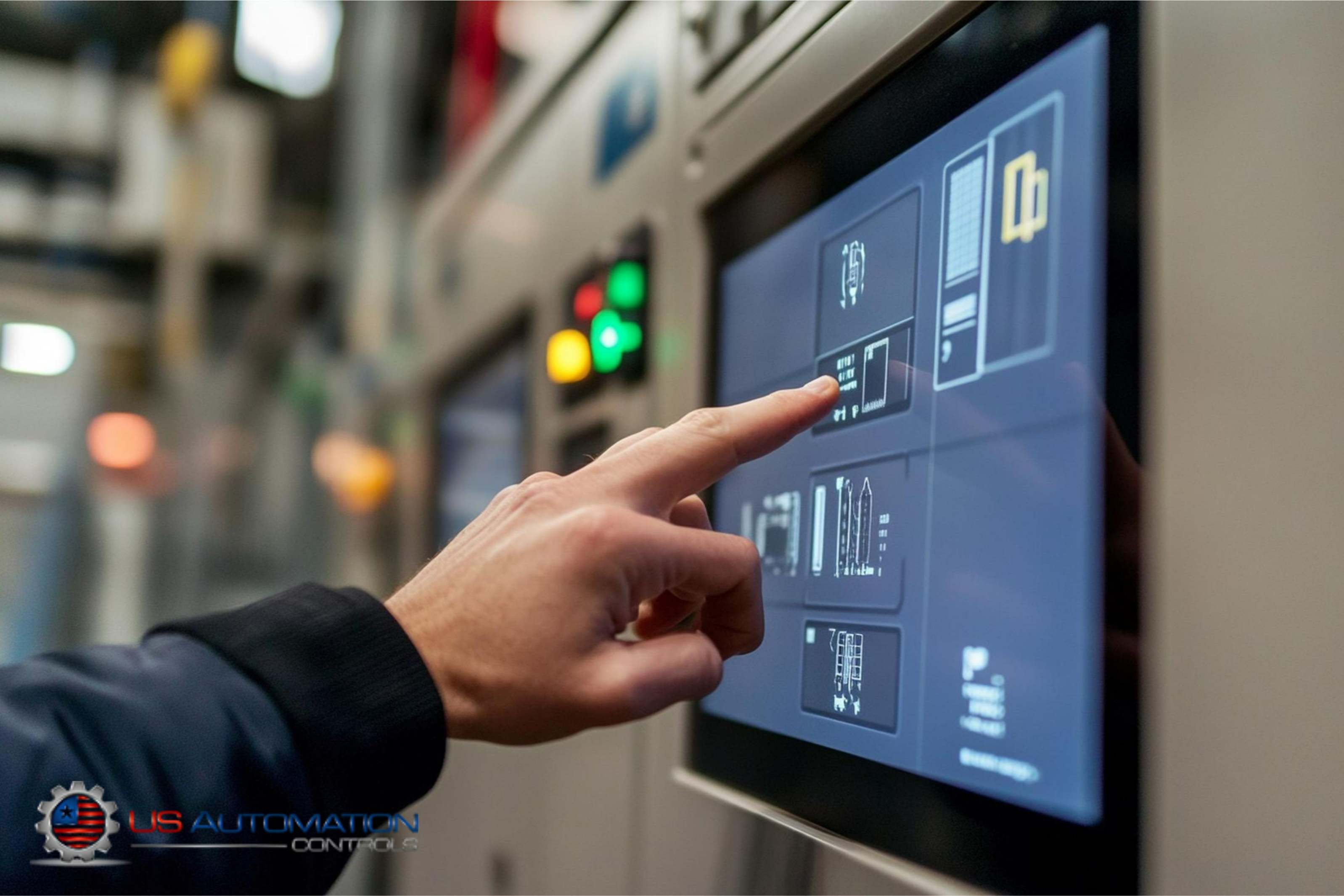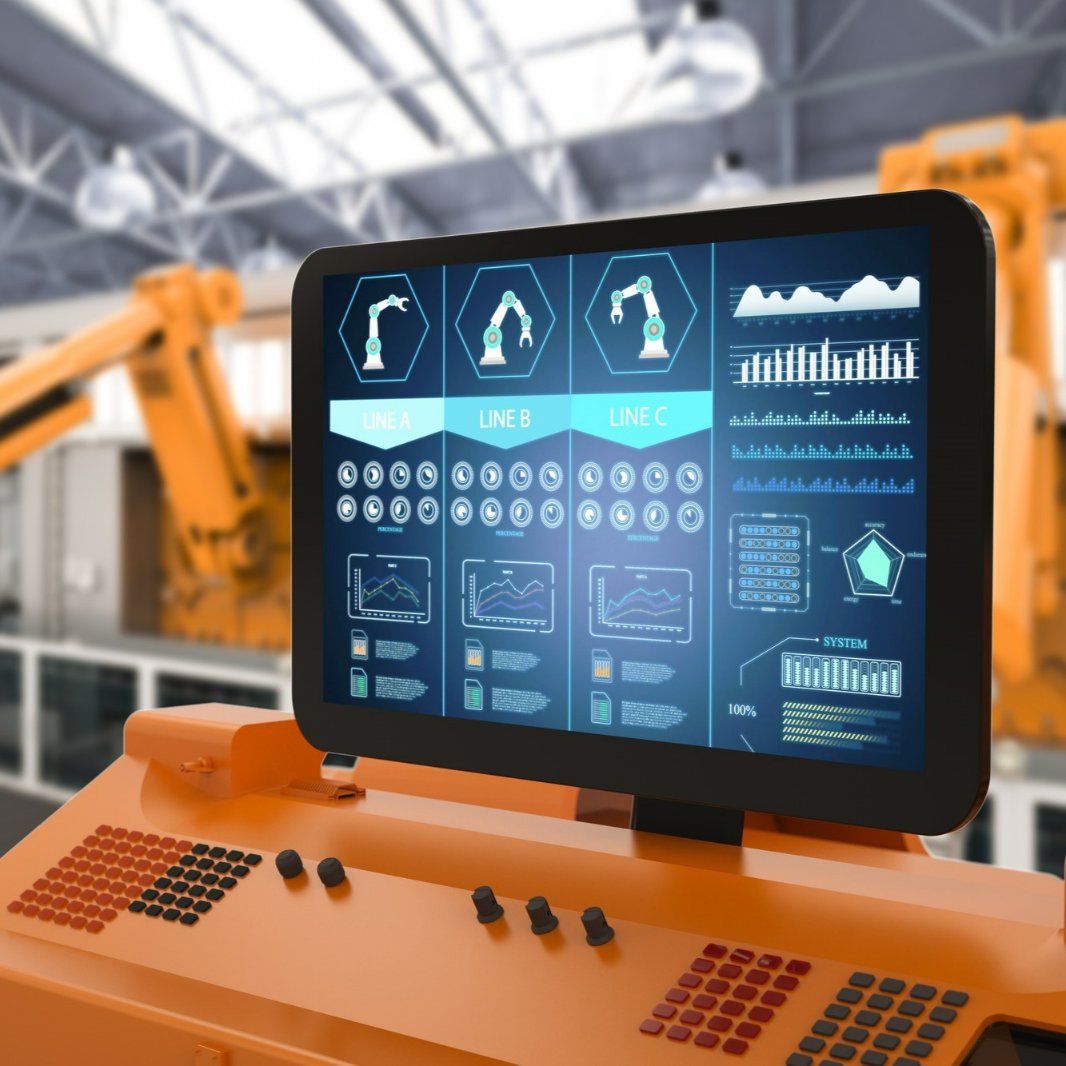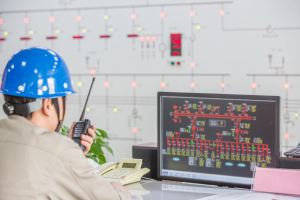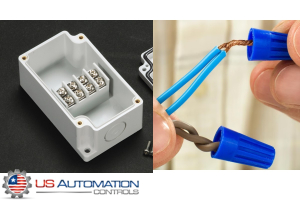The Role of Human-Machine Interfaces (HMIs) in Modern Automation Systems

Modern industrial settings heavily rely on automation systems to streamline processes, improve efficiency, and ensure consistent results. However, such modern automation systems still have to be operated by humans. Thus, an efficient interaction between humans and machines is essential.
The absence of seamless interaction between humans and machines in industrial settings leads to malfunction, lack of performance, and safety hazards. On the other hand, well-designed human-machine interfaces allow simple interactions with industrial equipment and ensure efficiency, safety, and effectiveness. Some benefits of using high-quality human-machine interfaces are minimizing the learning curve, lowering the risk of accidents, and ensuring performance.
This article will comprehensively introduce industrial automation HMIs and their role in modern automation systems.
What Are Human-Machine Interfaces (HMIs)?
HMIs allow a human to control a single machine or piece of equipment. As a type of user interface (UI), HMIs usually include operating a heavy-duty piece of industrial equipment.
HMIs have been coming in many shapes and forms throughout the years. From the traditional knobs and levers to modern screens and graphical user interfaces (GUIs), HMIs help a human operate a machine in many ways.
This versatility results from variable requirements in different industries and technological advancements that have made new options available. Whether by manually manipulating the levers and knobs or by modifying a machine’s settings through a touch screen, humans interact with machines to make them operate how and when they want.


The Role of HMIs in Modern Automation Systems
Over time, many new ways of operating machines have been developed, especially in industrial settings. Since modern machinery has become more advanced, the need for more advanced automation systems has also arisen. HMIs have evolved from knobs and levers into seven-segment monitors and membrane keypads and from those into touchscreens and voice control.
All of these advancements are achieved in light of our desire to simplify complex operations and facilitate human operators’ efficient and effective interaction with industrial machinery. Moreover, these advancements help with easier decision-making in many ways, from showing appropriate alerts and accurately indicating issues to allowing for minute modifications to the machine’s performance.
Such alerts and modifications reduce human error, enhance productivity, and avoid safety hazards. These improvements have been critical to the advancement of certain industries more than others. Energy and manufacturing are two examples of industries that have greatly benefited from modern automation systems and their advanced HMIs.
HMI Technology: Key Features and Advancements
As mentioned above, human-machine interfaces have significantly benefited from the technological advancements of the past 50 years. User interfaces for operating industrial equipment are very similar to those used for electronic devices like cell phones and computers. Modern HMIs include touchscreens and voice control systems, as well as advanced graphical user interfaces similar to those seen in everyday electronics.
These HMIs are well integrated with other systems, allowing efficient data exchange between the user interface and other systems such as SCADA (Supervisory Control and Data Acquisition). Such connectivity helps the human operator to make informed decisions, operate the automated system effectively, and avoid accidents.
Operating industrial equipment requires accurate customizations, modifications, and configurations in many instances. We owe the simplicity of such modifications to the intuitive design of human-machine interfaces, which helps the operator handle complex tasks through minimal and straightforward interaction with the machine.
Industrial Automation and HMI Applications
Although automation systems are present in almost every industrial setting these days, there are specific industrial applications for HMIs that are more pivotal than others.
In automotive manufacturing, HMIs control robotic arms that assemble vehicles with precision. In food processing plants, HMIs monitor and control the temperature and timing of production lines to ensure products’ quality and safety.
With the recent developments and the rise of artificial intelligence, there are many possibilities for HMIs to become more intuitive, more helpful in decision-making, and easier to work with.


Conclusion
The importance of HMIs in automation cannot be overstated. With the rise of new technologies, HMIs have always benefited from more intuitive, informative, and better-integrated designs. These designs have simplified operating industrial automation systems and paved the way for easier handling of complex tasks.
Top-Notch Automation Controls Distributors and Wholesalers in Short Hills, NJ
Do you need automation control supplies? US Automation Controls is your trusted distributor based in Short Hills, NJ. USAC has been a premier wholesaler and distributor of automation controls with a money-back guarantee for more than 50 years. Our 5-star ratings bear witness to our dedication to customer satisfaction.
Contact us now and get your high-quality automation control supplies at affordable costs!
Frequently Asked Questions
What industries rely most heavily on HMIs?
Industries like automotive manufacturing, food processing, energy production, and logistics rely heavily on HMIs. These interfaces are critical for controlling machinery, monitoring real-time performance data, and ensuring safety.
How do HMIs reduce human error in industrial settings?
HMIs reduce human error by providing intuitive controls, real-time data, and visual alerts. These features allow operators to quickly identify and correct issues, minimizing the likelihood of mistakes.
What are the latest advancements in HMI technology?
Recent advancements include touchscreens, voice control, and high-resolution graphical user interfaces. Connectivity to larger systems like SCADA and incorporating AI and machine learning are also becoming more common.
How are HMIs integrated with automation systems like SCADA?
HMIs connect to SCADA systems, allowing operators to monitor and control multiple machines simultaneously. This integration enables centralized management and better decision-making by providing comprehensive data analysis.







